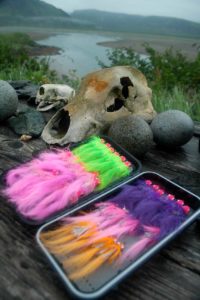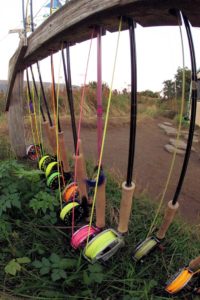Epic Blog
Machete’s Guide Gear Talk – Fly Lines
06.29.20
Welcome back! In the last segment of Machete’s Guide Gear Talk we discussed fly reels. Before that we talked about fly rods for our OUTPOST camp. Now we’ll talk about choosing an appropriate fly line for your remote fly fishing trip at either camp.
Who’s line is it anyways?
The fly line is probably the most over looked and under appreciated component of essential fly fishing tackle. It can be the difference between good casting and bad casting and can put a serious strain on your casting arm and shoulder if the line does not match up with the rod. (Of course, poor casting technique works your arm far harder than the worst line or rod.)
Think about it like this; your rod is a sports car. It can perform at super high rates of speed and is incredibly powerful, but it’s only capable of reaching its maximum performance level with the right tires. Matching the right fly line to your rod will let you unleash all of the rod’s potential and make casting less physically taxing. Remember that you’re going to fish harder than you likely ever have before in your life! You don’t want to burn out mid week with a soar shoulder from casting fatigue – we’ve seen this happen time and time again.
Steamer dreams
So what types of lines are best suited for our style of fly fishing on the Alaska Peninsula?
Well that depends. If you’ve spent any time with us up north at either camp you know the number of fly fishing techniques we employ can be just as varied as the species we target. But when you boil it down at the end of the day, we’re streamer junkies. Thankfully, so are trout, dollies and salmon. And grayling, too!
In fact, if I was forced to choose just one fly to have in my box for either camp as a guide it would be a black and white Dali Lama (sometimes “Dolly Llama”). I dunno what it is about that fly – the weight, the contrast, the flash, or the combination, but it consistently catches everything from grayling to silver salmon. It’s an incredibly effective pattern, but it is a nightmare to cast! To turn these big, heavy bugs over you need a thick aggressive taper in your line – something with enough mass to load your rod deep into the rod butt so that it can spring forward and launch that hunk of junk with less effort.
In simple terms, fly line taper is the shape/size and weight of the front 30′ of your fly line.
These days all of the big line manufacturers offer some variation of this shorter, more aggressive line. Most are designated as being specifically designed to cast larger streamer-like patterns. Some specify that they are for bass or pike, while others have more generic titles, like Scientific Anglers Mastery Titan. Make sure to pay attention to the weight designation so you can match it to your rod.
One quick word on intermediate or sinking lines; leave them at home. At OUTPOST, we are typically fishing smaller bodies of water with minimal flows where the most effective way of gaining depth is to add weight to the fly. (Short 5′ to 15′ sink tip lines can be helpful at times in certain conditions at SAFARI. But a floating line only is just fine.)
Stay tuned for the fifth and final installment of Machete’s Guide Gear Talk, where we’ll talk about duffel bags and day packs. Until next time!
Find more Machete articles here.




